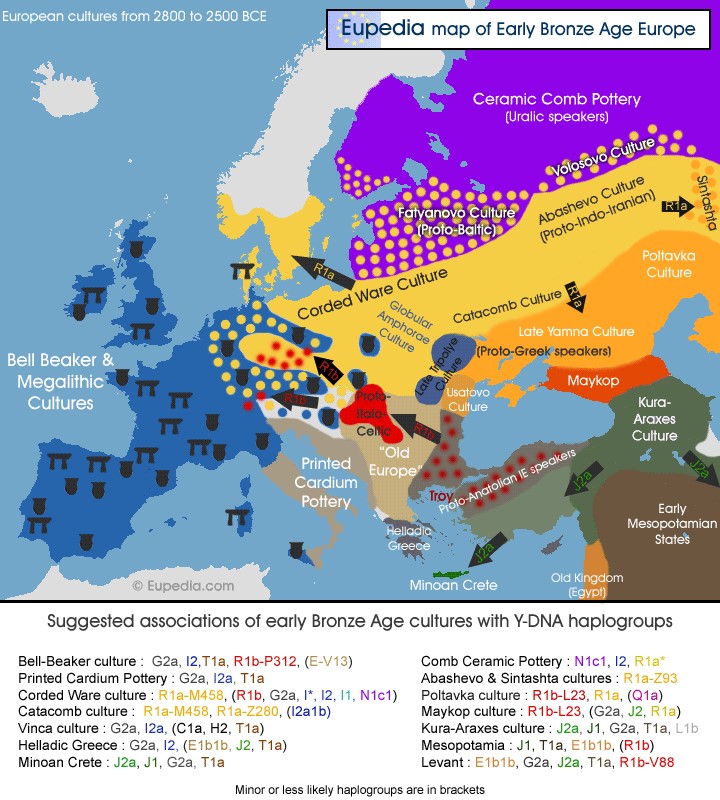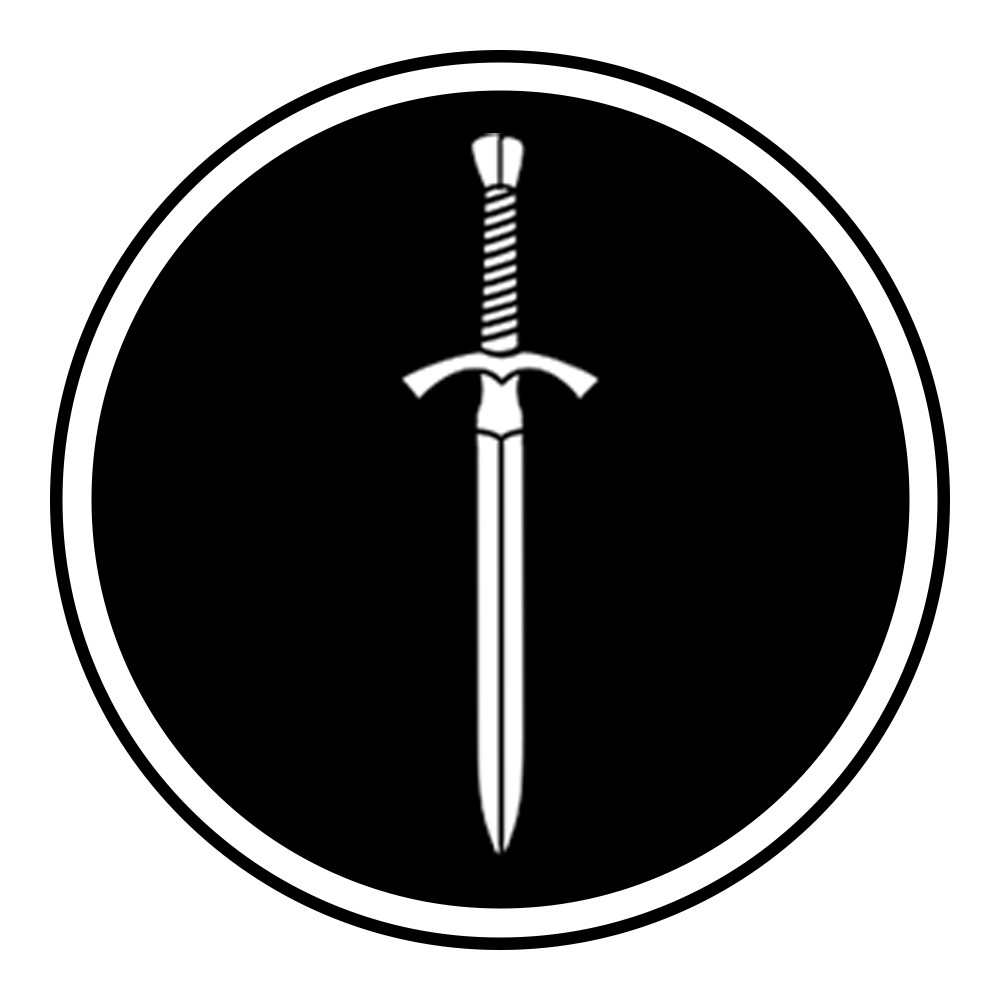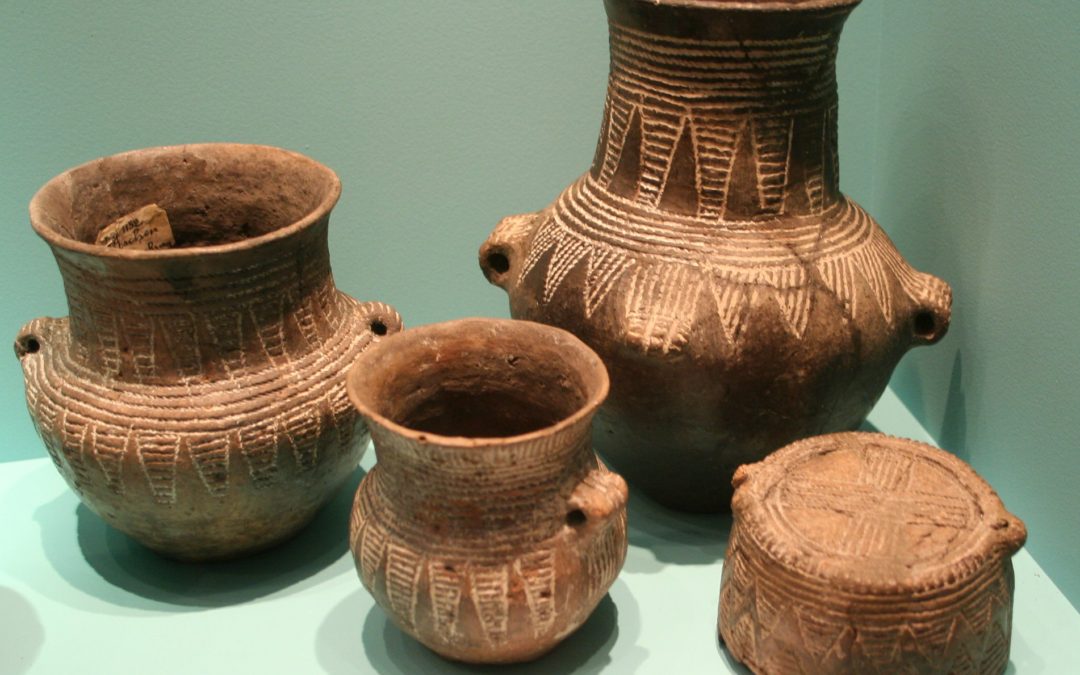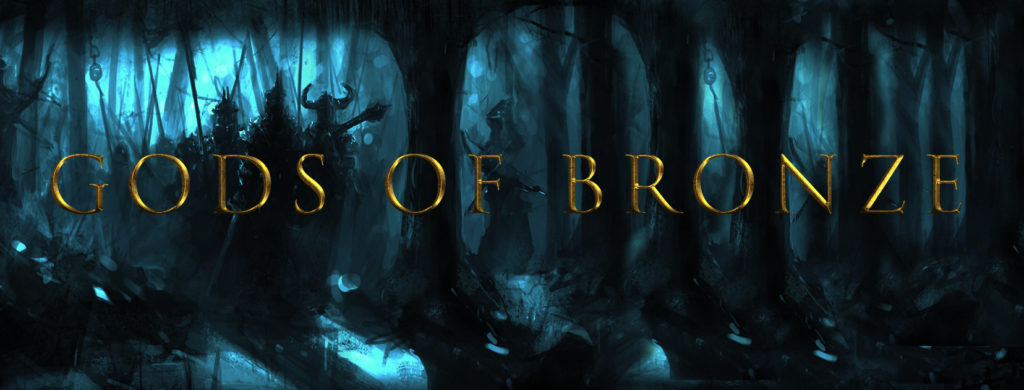The Corded Ware culture existed between c. 2900 BCE – c. 2350 BCE, spanning the late Neolithic, through the Copper Age, and ending in the early Bronze Age.
They encompassed a vast area, from the Rhine on the west to the Volga in the east, occupying parts of Northern Europe, Central Europe and Eastern Europe.

These people were, to one extent or another, ancestral to all northern European people from the Baltic to the Atlantic.
The Corded Ware people were closely related to the people of the Yamnyaa culture, “documenting a massive migration into the heartland of Europe from its eastern periphery,” the Eurasiatic steppe.
The Corded Ware people had a mobile pastoral economy relying mostly on cattle and occasional cereal cultivation.
They used horses and ox-drawn wagons and copper and bronze artefacts as well as stone battle-axes.
Their coarse pottery was typically decorated with twisted cord impressions, and sometimes with other types of impressions or incisions. And they used beakers and cups for drinking.

Their dead were inhumed in flat graves inside a small mound. Bodies were laid on their side with bent knees. Wagons and sacrificed animals were present in the graves.
The Corded Ware culture disseminated the Proto-Germanic and Proto-Balto-Slavic Indo-European languages. Which means their language was ancestral to English.

The Corded Ware Culture also spawned the later Sintashta culture far to the east, the chariot riding warriors who invaded and ruled over India and Iran bringing technology, religion, and culture.

The Yamnaya, Corded Ware, and Sintashta people will all play a part in my new fantasy series Gods of Bronze which takes place in the early Bronze Age.
I will share more about these and other peoples soon.
To read more see the confusing Wikipedia page
For genetic information check out Eupedia page on the Corded War Culture.



Fascinating stuff! 🙂
Thanks for reading!
Love you articles as well as your books. I read a lot both fact & fiction. My good reads only shows those i bought through amazon. I get a lot at used book store & yard sales they don’t know about so good reads does not show them. Have you read Frizt Zimmerman’s books? If not you should! Don’t let the titles scare you off. In particular this one in basically a exhaustive compilation of finds with some details & information to look them up. There is much about bronze age finds & corded. Where as I have found in your country archeology is a national pass time & so more open about finds. Here in US Smithsonian heads up those who make all out effort to keep finds out of public eye unless it is one of their approved finds.
Here is book link; https://www.goodreads.com/book/show/18897881-the-nephilim-chronicles
Thank you for reading and for taking the time to comment. I have not heard of Fritz Zimmerman, thanks for the link. I suspect you will enjoy my new series Gods of Bronze. Keep an eye out for it and read The Wolf God prequel novella now if you haven’t already. Cheers.